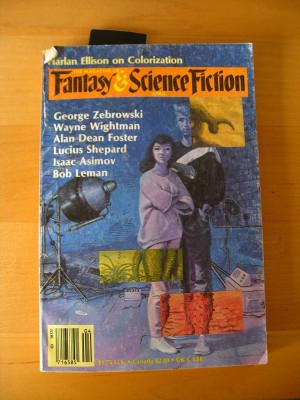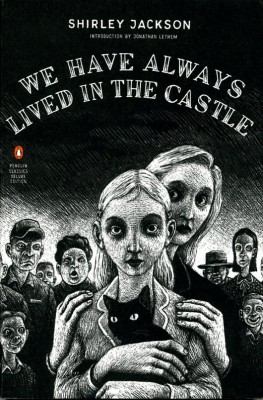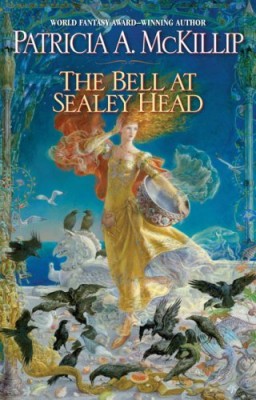I picked up a few old copies of Fantasy & Science Fiction for free this past fall, and should be posting a couple of reviews from them at intervals. Reading this issue, April 1987, meant a number of firsts for me – namely, my first time actually reading F&SF, my first time reading any non-electronic pro genre magazine, and my first time reading several big-name authors (…pretty much everyone in this issue, really). Embarrassing.
Also, check out this most excellent cover (an illustration for Wayne Wightman’s “Cage 37,” and, since Kakaner asked, honorary BBCF):
 Aww yeah. Alienated youth clad in flabby sweats squint at you from the thick of the ’80’s.
Aww yeah. Alienated youth clad in flabby sweats squint at you from the thick of the ’80’s.
Anyway, reviews! Two to start.
—–
Stephen Sondheim once dismissed his lyrical work for West Side Story as being “wet,” which has stuck with me as being a useful descriptor for the kind of self-seriousness generally accompanied by moistened eyes being cast to the horizon. (I love WSS anyway, by the way.) Lucius Shepard‘s prose in “The Glassblower’s Dragon” struck me as being very, very wet. Blah blah blah disaffected artist and club girl find Moment of Solace in each other’s company. Cue an outpouring of faintly patronizing affection on the part of the artist, a general pity party, and some really soppy declamations:
“And loss was probable, for love is an illusion with the fragility of glass and light, whose magic must constantly be renewed. But for the moment they did not allow themselves to think of these things. They were content to stare after the dragon, after the sole truth in their lives that no lie could disparage.”
Buh.
—–
George Zebrowski‘s “Behind the Night” dwells on “a sterile, post-plague United States and a 119-year-old president who is implementing a foreign policy based on treason” (stealing F&SF’s blurb there). It goes for elegiac, but doesn’t really get beyond fervent, slightly incoherent sentimentality, e.g.
“The sonata of survival is unaffected by our views of it; we have yet to learn how to change more than a few notes without creating dissonances. Life requires the deterioration of the body, the dashing of hopes, the death of love, to produce a head full of fading thoughts.”
and
“‘A beautiful idea,’ I said, moved by the depth of her feelings. And I realized that in a sense I had become the father of a new country.”
Oh Mr. President, what a clever duck you are.
Also, this one had yet more bubblings-up of creepish paternalistic tenderness. Brrr.
– E





